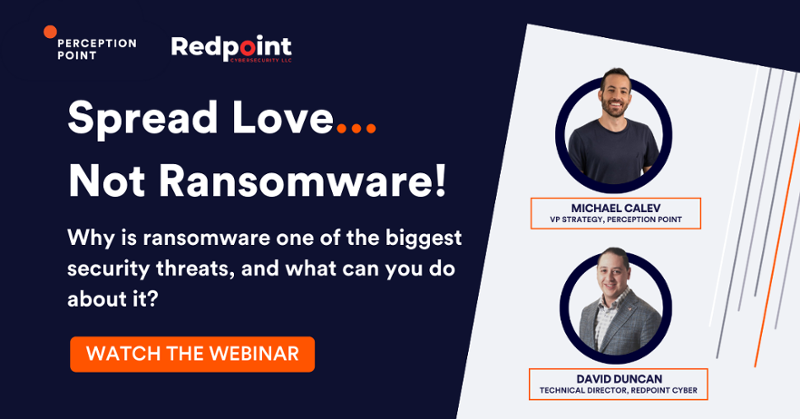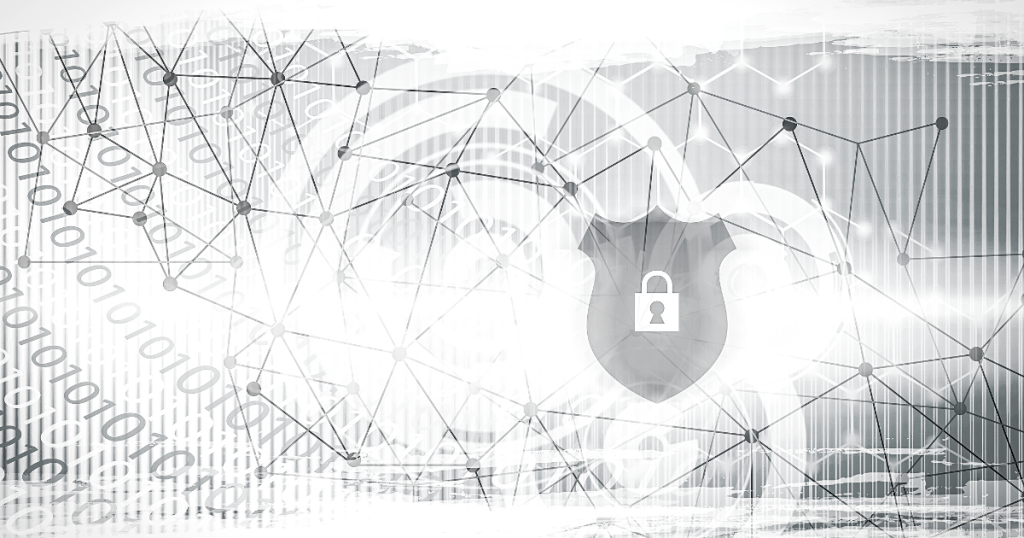What Is Ransomware?
Ransomware protection is crucial for organizations to maintain security. Ransomware is a type of malicious software (malware) that uses cryptography to hold information for ransom. Ransomware prevents legitimate users from accessing and using their information. Access is granted only if the organization or individual pays the ransom.
Ransomware attacks employ asymmetric encryption. It is a form of cryptography that uses two keys—a private key to encrypt files and a public key to decrypt them. Threat actors generate each pair of keys especially for the victim.
The private key can decrypt the files held captive by the threat actor. It is offered to victims only after they pay the ransom. In some cases, however, the attacker might take the ransom without providing the decrypting key as agreed. Unfortunately, it is almost impossible to decrypt ransomed files without the private key.
Once ransomware successfully infects a system, it executes a malicious binary. The executed binary then starts searching and encrypting valuable files, such as images, documents, and databases. It can also attempt to exploit vulnerabilities and spread into other computer systems over private or public networks.
In this article
Ransomware Removal—What to Do When You Get Infected
Once ransomware successfully encrypts files, it displays a message asking for ransom. When this happens, stakeholders in the organization need to decide whether to pay the ransom or not.
In most cases, it is not possible to recover the encrypted files. However, there are some actions you can take immediately. Here is what you can do when ransomware infects your systems:
- Quarantine the machine—there are certain ransomware variants that try to spread to other machines and connected drives. You can remove access to other targets to limit the spread of ransomware.
- Leave the computer on—file encryption processes can affect the stability of the computer. If you try to power off the computer, you might experience loss of volatile memory. To increase the possibility of recovery, keep the affected computer on.
Create a backup—in some cases, you might be able to decrypt files without having to pay the ransom. You can achieve this by making a copy of these files and storing this backup on removable media. This way, if a decryption effort fails and damages the files, you still have a copy to recover. - Check for decryptors—the No More Ransom Project offers free decryptors. You can check this project for a decryptor that matches the ransomware. You should first run the decryptor on a copy of encrypted information to test if it can truly help restore your files.
- Ask for help—computers often store backups of files. Digital forensics experts can try to recover these backup copies—but can only succeed if the copies were not entirely deleted by the ransomware.
- Wipe and restore—you can restore the machine from an operating system installation or a clean backup. This can help you ensure that all malware components are entirely removed from the device.
Related content: read our guide to How to Prevent Ransomware
User Education: How Users Can Prevent Ransomware Infection
User education is essential for preventing ransomware infection. Training sessions should be conducted periodically to ensure users are aware of important security measures, including:
- Avoid clicking on links from unknown or untrusted sources—including websites and emails.
- Avoid revealing sensitive information—including personal and credential data that an attacker could use to launch a ransomware attack. Even if the message appears legitimate, it is better to be cautious.
- Avoid opening suspicious email attachments—including attachments that prompt you to run a macro, as this can be an entry point for malware.
- Avoid using unknown flash drives—including storage media such as USB sticks that you don’t know where they are from.
- Ensure your operating system and programs are regularly updated—this allows you to benefit from the latest patches and prevent attackers from exploiting the newest discovered vulnerabilities.
- Avoid downloads from unknown sources—only download files from trusted sites, which can be verified by their trust seals (i.e. https, lock or shield symbols).
- Use a secure VPN service for public Wi-Fi—using public Wi-Fi networks can expose your device to attacks, so it is best to avoid carrying out sensitive transactions over a public Wi-Fi connection, or use a VPN.
Protecting against Ransomware: Building an Anti-Ransomware Program
An anti-ransomware program can help protect organizations against ransomware attacks.
Here are the five main elements of an effective anti-ransomware program:
Protect
Backup can help protect the organization against ransomware. It is an integral component of an anti-malware program. When creating backups, organizations should follow the 3-2-1-1 rule. It means you need to keep three copies of data on two different media types, and store one version off-site in addition to one immutable copy.
You can rotate immutable media as a tape or a disk. You can disconnect it from the network and then take it off-site to a secured secondary location. There is a wide range of vendors that offer cloud-based immutable storage. In addition to protecting against ransomware, secure off-site copies offer easier recovery. When choosing an off-site option, note that recovery times are often longer from offline backups. Additionally, offline backups can prove difficult to test. You can achieve faster recovery times by replicating to a hot target, like a cloud service or a secondary appliance—which keeps backups in a state readily available for recovery.
Prevent
Beyond deploying strong, reputable endpoint antivirus security, web filtering, isolation technologies, robust backup and recovery, and overall comprehensive security training, it is important to remember that to prevent ransomware attacks, IT security professionals need to shift from a detection approach to a prevention approach. With the nature of ransomware attacks, detection after the fact is too late, as the hacker is already inside the organization and the race to stop the damage is a difficult one to win. This is why it is critical to protect every channel through which content is entering into the organization. With email still being the dominant entry point for cybersecurity attacks, it continues to remain a weak point in many businesses’ security infrastructure. Even the most experienced users are not immune to cyber attackers who continue to develop more sophisticated techniques to deliver ransomware via email.
Secure
Ransomware usually targets Windows operating systems. According to recent findings, over 83% of malware was designed to breach Windows systems. Backup systems usually require many role-based instances for data movement, centralized management, reporting, and search and analytics. It can be quite complex to secure all those machines.
To secure Windows operating systems, consider locking down these components so that they can only perform the actions required and not more. Alternatively, you can employ a solution based on integrated backup appliances. This kind of solution can remove this complexity and also comes hardened by default.
Test
There are many factors that can impede a successful recovery. For example, trying to restore from infected backup copies of machines. This is why you should regularly test the viability of any strategy you create for backup and disaster recovery purposes. You can leverage automated recovery testing, which can help compliment your data management and protection efforts.
Detect
You should strive to detect ransomware as early as possible, because early detection can help facilitate faster recovery. The majority of backup vendors offer predictive analytics assisted by machine learning (ML), which can help detect possible attacks. Predictive processes can find abnormal data fluctuations and then alert administrators.
Instant Recovery
If data is effectively backed up and tested for its recoverability, the organization should be ready to roll the network back to a safe restore point. Once this is achieved, the organization can avoid data failure, downtime, and the consequential revenue loss.
Ransomware Protection with Perception Point
Perception Point delivers one platform that prevents malware, ransomware, APTs and zero-days from reaching your end users.
Advanced email security is an integrated cloud email security solution (ICES) that can replace SEGs. The solution cloud-native SaaS solution protects your organization against all threats using 7 layers of advanced threat detection layers to prevent malicious files, URLs, and social-engineering based techniques.
Advanced Browser Security adds enterprise-grade security to your organizations native browsers. The managed solution fuses browser protection technology with multi-layer advanced threat prevention engines which delivers the unprecedented ability to detect and remediate all malicious threats from the web, including phishing, ransomware, malware, APTs, and more. Multi-layered static and dynamic detection capabilities instantly detect and block access to malicious/phishing websites and prevent malicious file downloads of ransomware, malware, and APTs.
Advanced Threat Protection for Cloud Collaboration, File Sharing and Storage Applications, such as Microsoft 365 applications (OneDrive, SharePoint, Teams), Google Drive Box, AWS S3 buckets, Zendesk, Salesforce, and any of the other hundreds of apps out there, protects your organization with near real-time dynamic scanning. It does not tamper with files and does not impede on productivity.
An all-included managed Incident Response service is available for all customers 24/7 with no added charge. Perception Point’s team of cybersecurity experts will manage incidents, provide analysis and reporting, and optimize detection on-the-fly. The service drastically minimizes the need for internal IT or SOC team resources, reducing the time required to react and mitigate web-borne attacks by up to 75%.
Get a Demo today!

Ransomware protection is crucial for organizations to maintain security. Ransomware is a type of malicious software (malware) that uses cryptography to hold information for ransom. Ransomware prevents legitimate users from accessing and using their information. Access is granted only if the organization or individual pays the ransom.
Here is what you can do when ransomware infects your systems:
– Quarantine the machine
– Leave the computer on
– Create a backup
– Check for decryptors
– Ask for help
– Wipe and restore
Training sessions should be conducted periodically to ensure users are aware of important security measures, including:
– Avoid clicking on links from unknown or untrusted sources
– Avoid revealing sensitive information
– Avoid opening suspicious email attachments
– Avoid using unknown flash drives
– Ensure your operating system and programs are regularly updated
– Avoid downloads from unknown sources
– Use a secure VPN service for public Wi-Fi
– Protect
– Prevent
– Secure
– Test
– Detect
– Instant Recovery
























